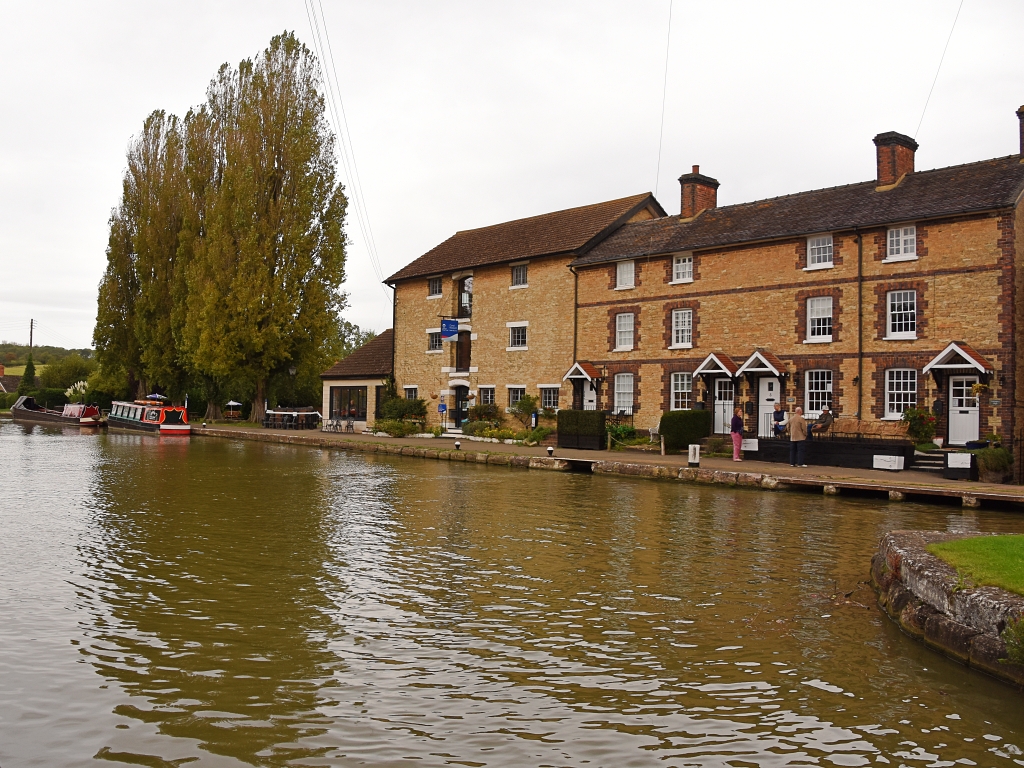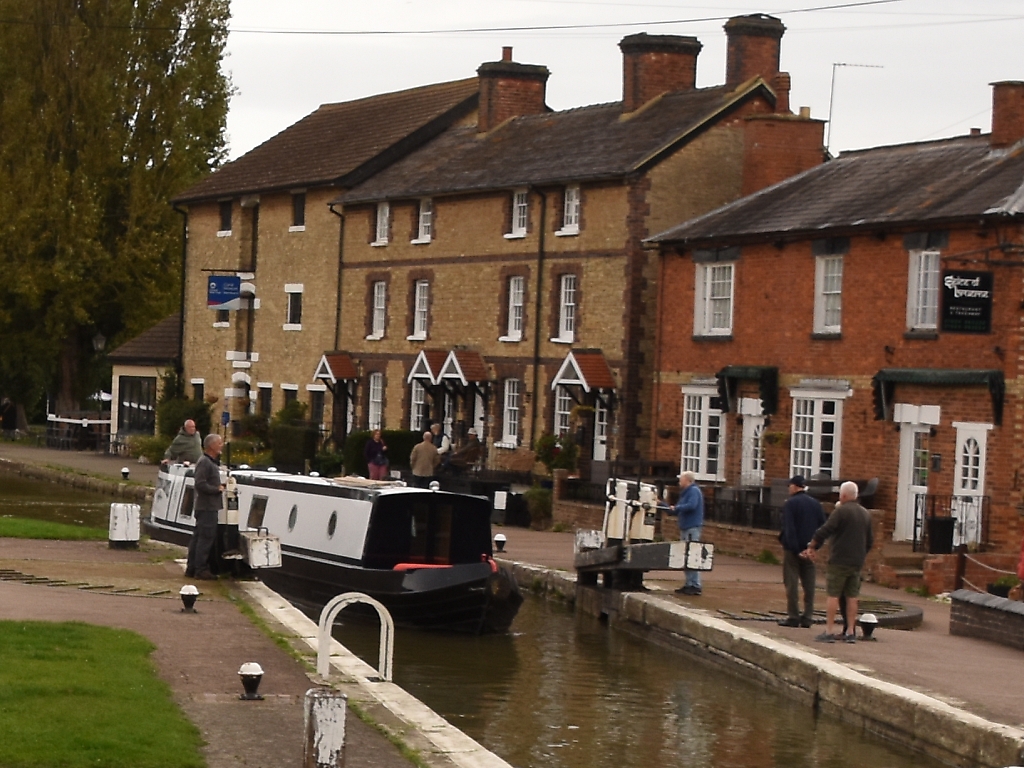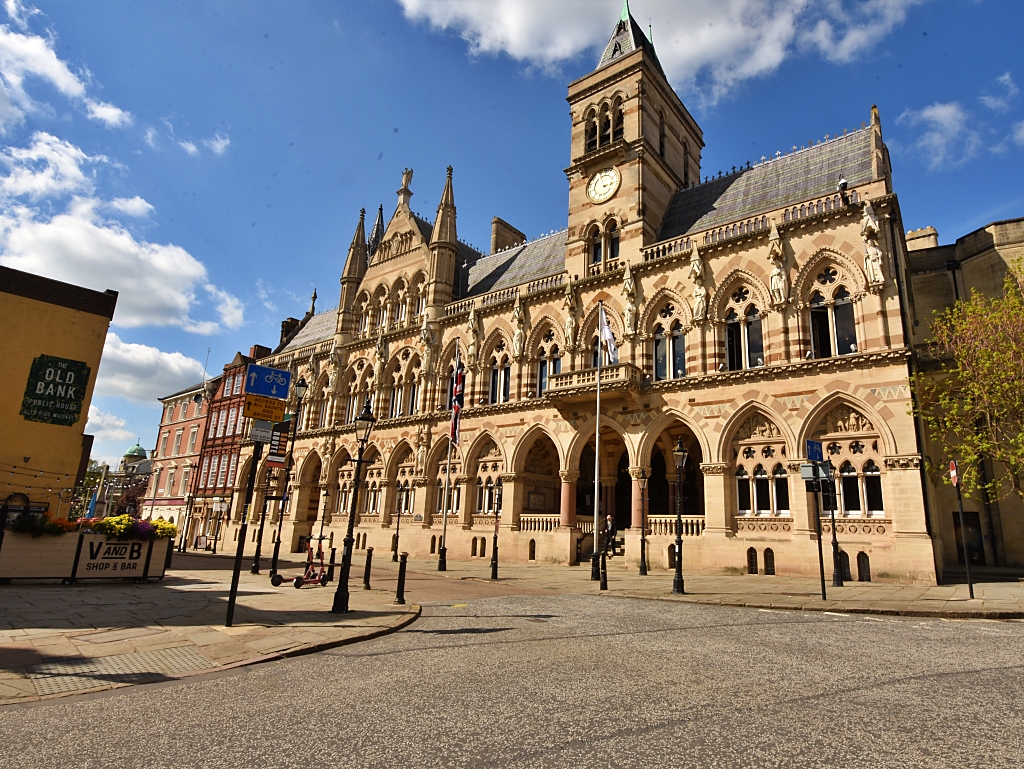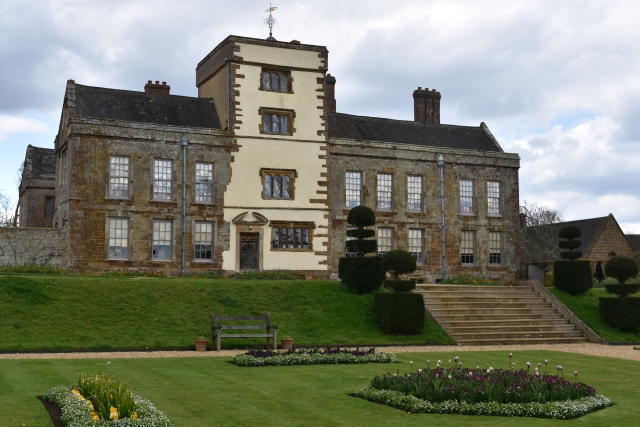Brixworth
A Northamptonshire Village Home to an Anglo-Saxon Marvel
Head north out of Northampton, and only five miles later - provided you leave the main road for a detour into Brixworth - you might find yourself in another time.
The countryside is typical Northamptonshire; lush, green, and undulating, bisected by ancient hedgerows and sharp-angled fields. And the village is a charming mix of cottages and small houses and boasts two pubs that date back to the age of horse-drawn carriages and coaching inns.
Brixworth is mentioned in the Domesday Book of 1086, but the Normans were nothing but late-coming interlopers. Because at the heart of the village lies a gem of Anglo-Saxon architecture, All Saints’ Church… and that’s where Brixworth’s story starts.
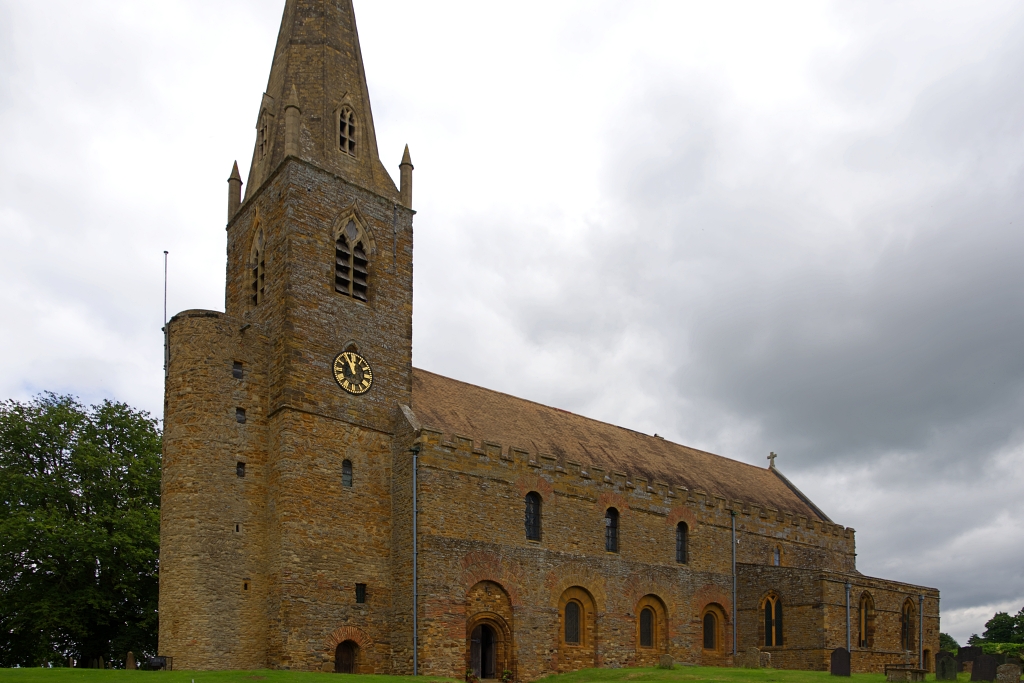 All Saints' Church in Brixworth © essentially-england.com
All Saints' Church in Brixworth © essentially-england.comAll Saints’
Church: A Saxon Masterpiece
The church itself dates back to AD680 and is one of the most significant surviving examples of Saxon architecture in England. Its age alone commands respect, but it is the church’s architecture that truly astounds.
While built mostly of local ironstone and limestone, the builders also used Roman bricks, likely salvaged from a nearby villa, thereby demonstrating a continuity of building practices from the Roman period into the Saxon era.
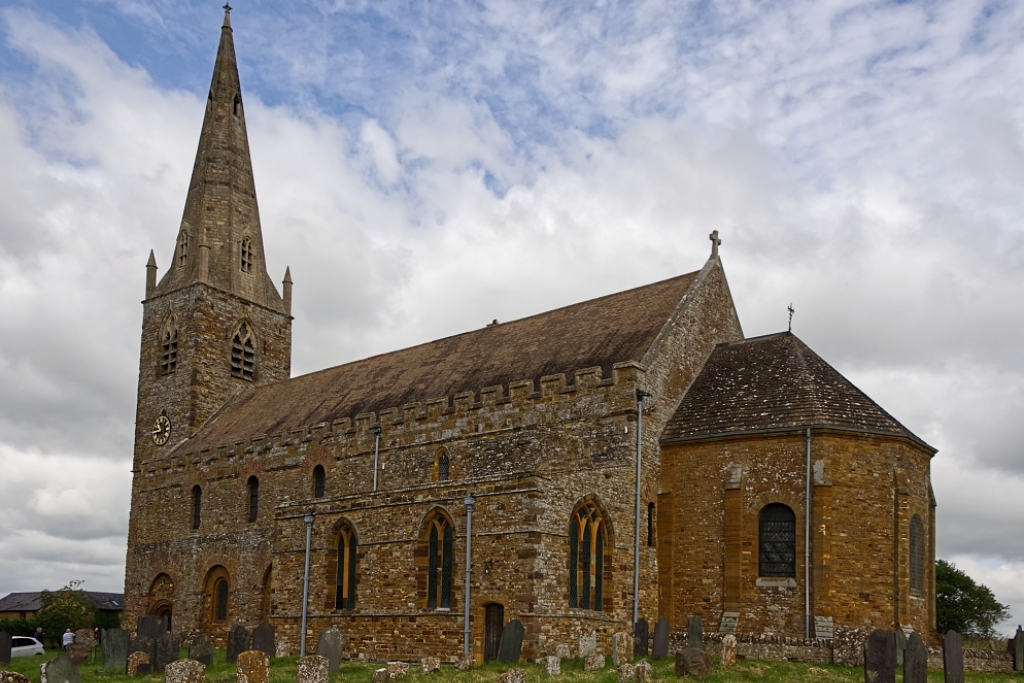 All Saints' Church in Brixworth © essentially-england.com
All Saints' Church in Brixworth © essentially-england.comThe church’s most striking feature is its imposing west tower, a rare element in Saxon churches. This tower, along with the long nave and the semi-circular apse, creates an awe-inspiring silhouette against the Northamptonshire sky.
All Saints’ interior is equally impressive with its high arched ceiling - though my favourite are the entrances. So different from the grand, decorated medieval gateways, even the larger, and very likely modified door is small by comparison and narrow. It turns simply entering this church into an act of humility.
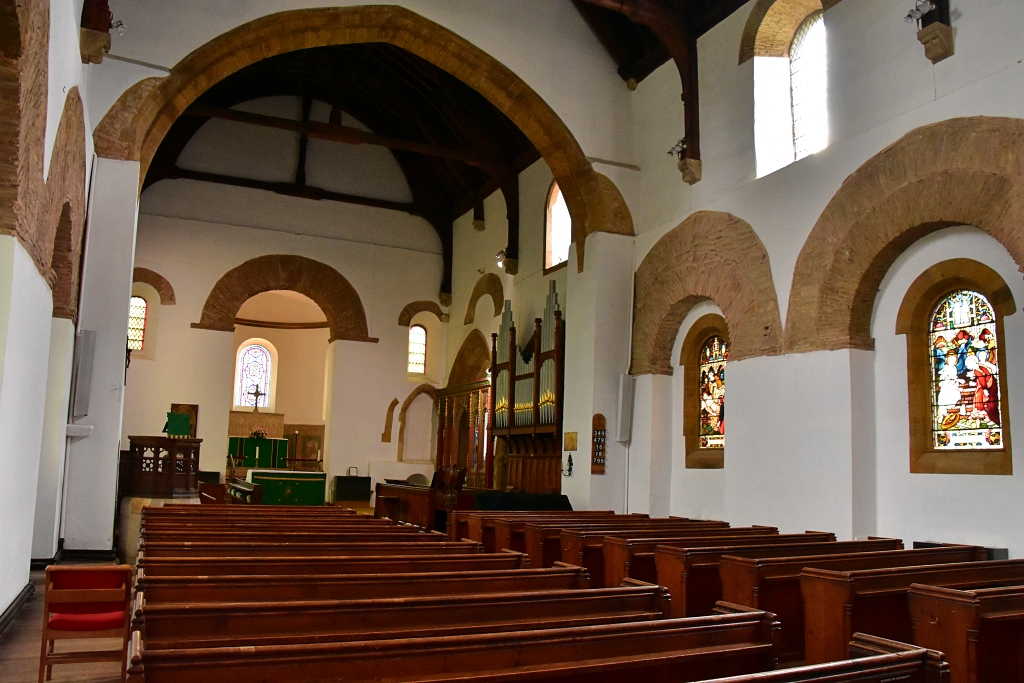 The Interior of All Saints' Church in Brixworth
The Interior of All Saints' Church in Brixworth © essentially-england.com
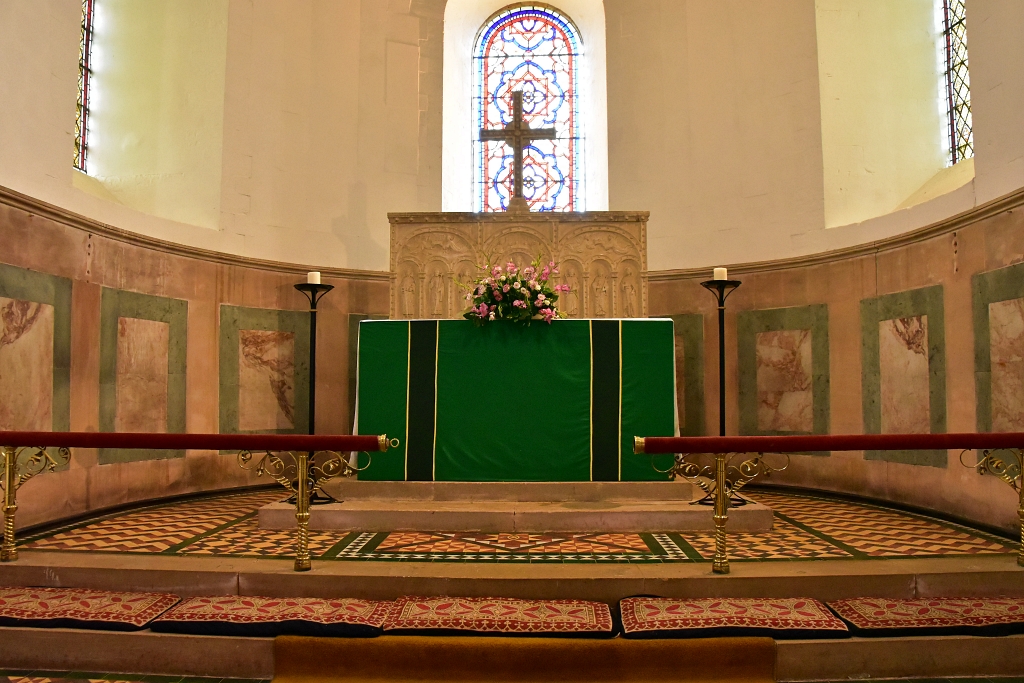 The Altar in All Saints' Church
The Altar in All Saints' Church © essentially-england.com
All Saints’ Church is an important piece of England’s ecclesiastical history. Throughout its long history, the church has witnessed numerous changes, from the Norman Conquest to the Reformation and beyond. Each era has left its mark, yet the essence of its Saxon origins remains undiluted. Today, it stands as a monument to the faith and determination of those who came before, offering modern visitors a direct link to the early days of English Christianity.
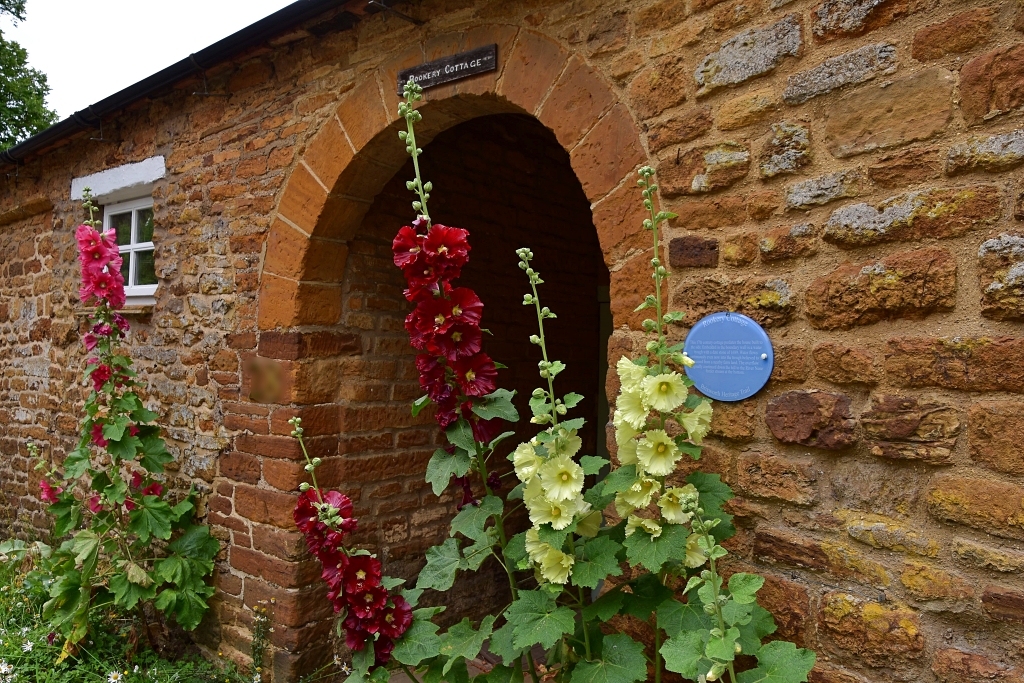 Pretty Hollyhocks at Rookery Cottage, Number 16 of the Brixworth Heritage Trail © essentially-england.com
Pretty Hollyhocks at Rookery Cottage, Number 16 of the Brixworth Heritage Trail © essentially-england.comVisiting
Brixworth Today
For history lovers, a visit to Brixworth and its Saxon church makes for a wonderful day out. After exploring the church, why not enjoy a leisurely stroll through the village, picking up a slice of Brixworth’s famous pate, or stopping at one of the old coaching inns for a drink or a meal? The surrounding area also boasts several walking trails that let you soak up more of the peace of this ancient landscape.
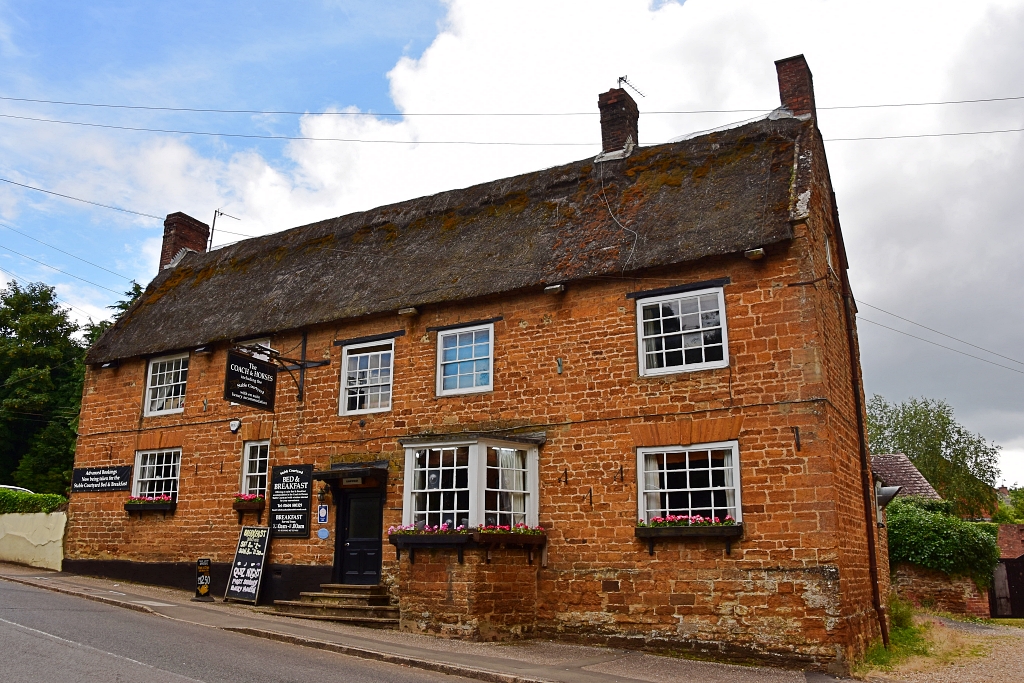 The Coach and Horses, Number 30 on the Brixworth Heritage Trail © essentially-england.com
The Coach and Horses, Number 30 on the Brixworth Heritage Trail © essentially-england.comThere is a reasonably sized car park outside All Saints’ Church, which should have space providing there aren’t any church events or services, or during drop-off or pick-up times for the nearby nursery. We arrived on a weekday at around 10am and left around lunchtime when the car park was much busier as parents collected their youngsters.
After visiting All Saints’ Church, we walked around the Brixworth Heritage Trail which took us around the village to see another 29 historic buildings. Each building is identified by a bright blue heritage trail plaque detailing some of the buildings’ history and it was like doing a treasure hunt. I could imagine all kids, young and old, enjoying trying to find all the plaques!
The trail was created by the local historical society and is just over one mile long if you follow our route mapped above, or you could follow a slightly longer route created by northamptonshirewalks.co.uk who give great detailed route instructions with loads of photos to follow.
If you’re a komoot.com user, then you should be able to follow our route with voice navigation on your mobile device. If you use a GPS device, then use the “Discover more info about this tour” link to download a gpx file.
To accompany the heritage trail there is a book which gives visitors a more comprehensive history of the village.
At the junction of High Street and Harborough Road, and opposite the Coach and Horses pub is a grassy seating area with a Brixworth Heritage Trail information. Here you’ll find a map of the village and the positions of the 30 historical buildings along the trail. Its not as if you need this map while following our route as the blue plaques attached to the buildings tend to stand out like sore thumbs, making them easy to find.
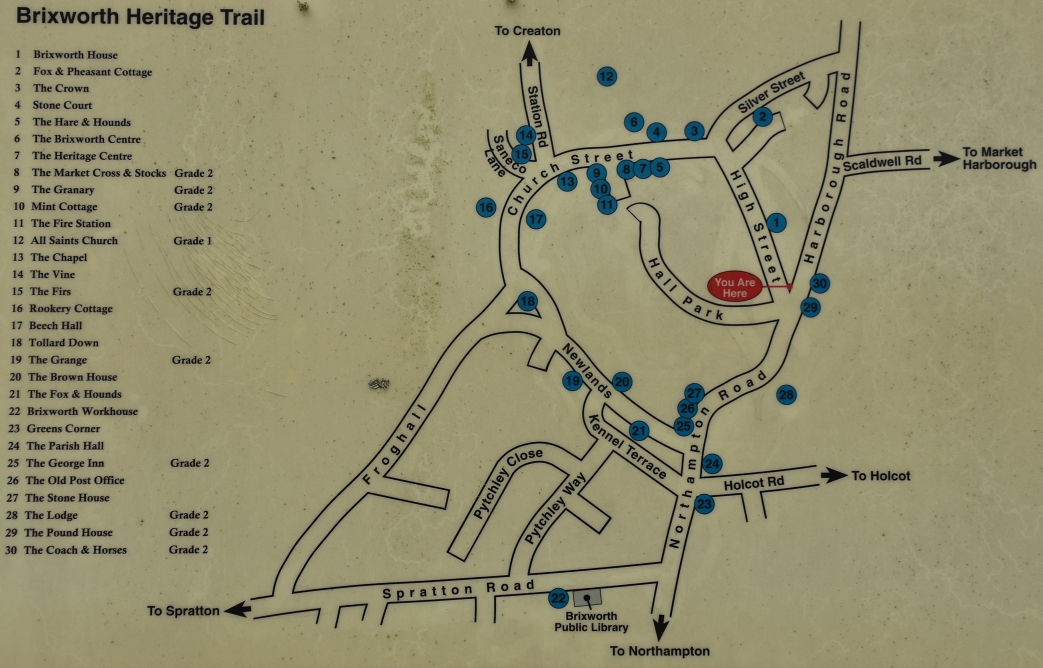 The Brixworth Heritage Trail Map (Photo taken from the information board in Brixworth) © essentially-england.com
The Brixworth Heritage Trail Map (Photo taken from the information board in Brixworth) © essentially-england.comBrixworth
Heritage Trail List of Buildings and Their Plaques
I’ve listed each of the 30 buildings on the Brixworth Heritage Trail and tried my best to accurately copy down the text on each plaque. We had a really enjoyable time trotting around spotting these lovely old historic buildings which was made even nicer as the gardens were in bloom.
1. Brixworth House
|
Dr Frederick Harper lived here when there was an outbreak of diphtheria in the village in 1890. For some 30 years at the beginning of the 20th century, Dr Rayner Winterbottom held his surgery here. Dr Mary Thomas practised here from 1937 until the late 1960’s. |
2. Fox and Pheasant Cottage
|
Dating from the 17th century, this was once the home of a local farmer. It was then a licenced beer selling outlet, popular with ironstone workers heading for local quarries. By 1891 it was also one of Brixworth’s eight butchers. |
3. The Crown |
This public house was recorded in the 1891 census as being run by Walter Mallard who also worked as an engine driver. During the early 20th century suppers for upwards of 60 people were being catered for and the inaugural meeting of the local branch of the Gasworkers and General Labourers Union was held here in 1914. |
4. Stone Court |
This cottage was a butcher’s shop during the 19th century and early 20th century, famed for its homemade lard and sausages. By the 1930’s part of the premises had become a confectioners where Mrs Summerfield made her own ice cream to the delight of the children in the nearby school. |
5. The Hare and Hounds |
In 1778 Northamptonshire Militia were using this public house as a recruiting office offering a liberal gratuity to recruits. In the 19th century Public Auctions and Coroner’s inquest were held here. An 1888 auction of 9 adjacent cottages stated in the particulars that the annual rental income was £40. 16s. Phipps Brewery closed the pub in 1953. |
6. The Brixworth Centre |
Built as a school in 1870, initially fees were 1d. per week, but abolished in1890. 3 teachers taught 130 pupils. Heating was installed in 1914 and water closets in 1920. A library service was added in the 1930’s and the County Library sign still remains. The building became a community centre when a new school was opened in 1973. |
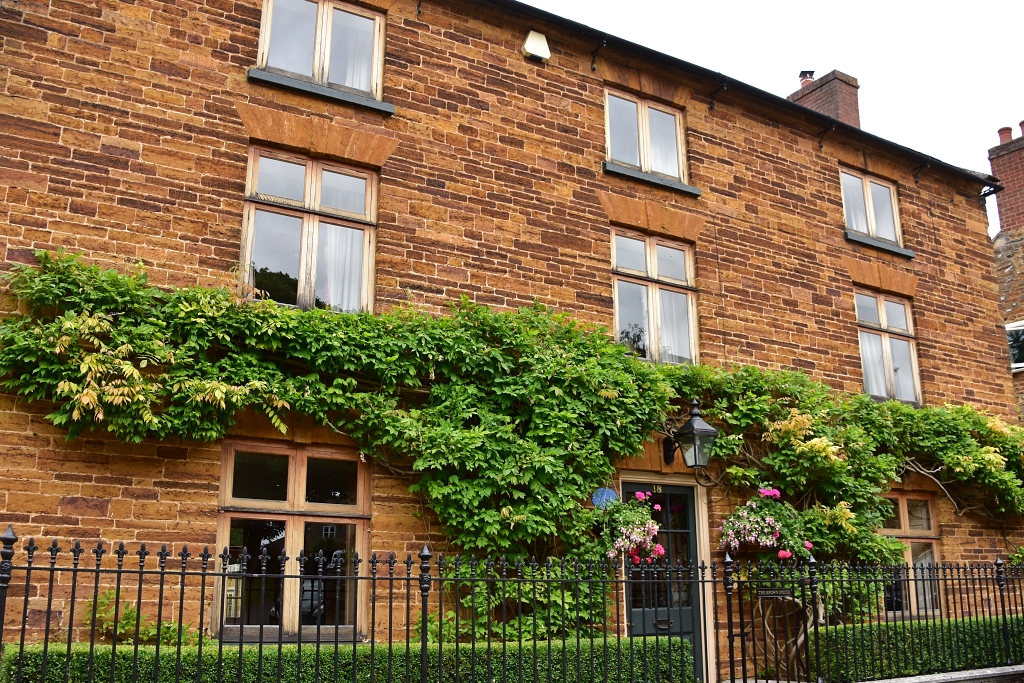 The Brown House, Number 20 on the Brixworth Heritage Trail © essentially-england.com
The Brown House, Number 20 on the Brixworth Heritage Trail © essentially-england.com
7. The Heritage Centre |
The Thomas Roe Charity erected this building to serve as a school in 1811 for the education of 10 poor children. It continued as a school for over 100 years. During and after WWII it was used by a variety of youth organisations but gradually fell into a state of dereliction. In 1993 the Charity trustees sold the building to the Friends of All Saints Church and volunteers worked hard to restore it to its present state. |
8. The Market Cross and Stocks |
This Grade II Monument of limestone is probably a 16th century replacement of the original Butter Cross erected in 1268 to commemorate the grant of a weekly market and annual fair. The Stocks are a more recent replacement from the 1960’s. |
9. The Granary |
A Grade II listed building dating from the late 17th century. It has a number of stone mullioned windows and also a small fire window. On the centre wall is an 18th century example of a Sun Alliance fire insurance mark. In the 1940’s it was a privately owned cottage hospital, and fetes were held in the garden. |
10. Mint Cottage |
This later 17th C Grade II listed cottage has a thatched roof and is built of coursed lias clay rubble. At the time of building the population of Brixworth was about 700. |
11. The Fire Station
|
Opened in 1912 as Brixworth’s first purpose built fire station it housed a manual pump. At this time Capt S Tite was in command of Brixworth Fire Brigade. In 1927 the Brigade refused to go to a fire in Holcot because Holcot had refused to contribute to the Fire Engine Fund. The station was sold in 1938 for £60. Post war plans to turn it into a slipper baths came to nought. |
12. All Saints' Church |
This Grade I listed church is an outstanding example of Anglo-Saxon architecture. Amongst a number of changes, a spire was added in the 14th century which was struck by lightning in the 18th century. The stone engraving near the entrance is known as the Brixworth Eagle and is probably from the Roman villa to the north. The west tower has a ring of six bells dating from 1622 with the most recent additional cast in 1993. |
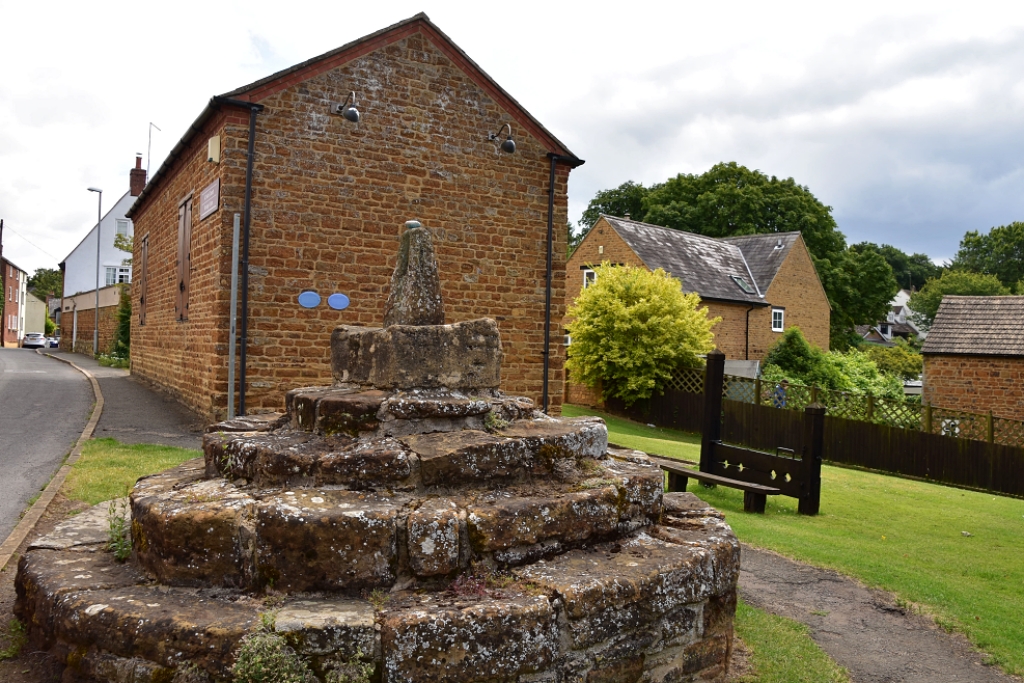 Brixworth Market Cross, Heritage Centre, and Stocks © essentially-england.com
Brixworth Market Cross, Heritage Centre, and Stocks © essentially-england.com
13. The Old Chapel
|
This imposing building was built by Thomas Holt in 1811 on land sold to Brixworth Wesleyan Methodists by William Wood for only 10 shillings. A schoolroom was added in 1860 paid for by local farmer Francis Underwood. The last recorded baptism was in 1972. |
14. The Vine |
From the early part of the 19th century this was a private school where pupils were charged 1d a week. Lacemaking was part of the curriculum. By 1881 it had become a public house. At the beginning of the 20th century Walter Jackson the landlord sold fish and chips in the yard and also ran the first local bus service. In the 1940’s the landlady’s father started up a small wood yard in the grounds which later grew to become G Mabbutt and Sons. |
15. The Firs |
A Grade II listed building dating from the 17th century with 19th century alterations. It is built mainly of regular coursed lias. Windows 2 and 3 at ground floor and 1 to 3 at first floor from left have moulded stone surrounds with mullion stubs. There is evidence that this was originally two cottages. |
16. Rookery Cottage |
This 17th century cottage predates the house built to the side. Embedded in the boundary wall is a water trough with a date of 1689. Water flows continuously even now into the trough believed to be drained from nearby farmland. The overflow originally continued down the hill to the River Nene feeder stream at the bottom. |
17. Beech Hall |
In the early 19th century, the Peacock Pub stood on this site. Before this it was a Bakehouse. The original cottages were replaced by a single dwelling in the late 1940’s by local craftsman, Walter Bray, who reused the original Northamptonshire quarried stone in the construction of the house that stands today. In the late 20th century, it became the home of Brixworth Pottery. |
18. Tollard Down |
At the time of the Domesday Survey this site was a watermill, and the stream still flows on the opposite side of the road. The present cottage is 17th century and was previously known as Sarah Flint’s Cottage. |
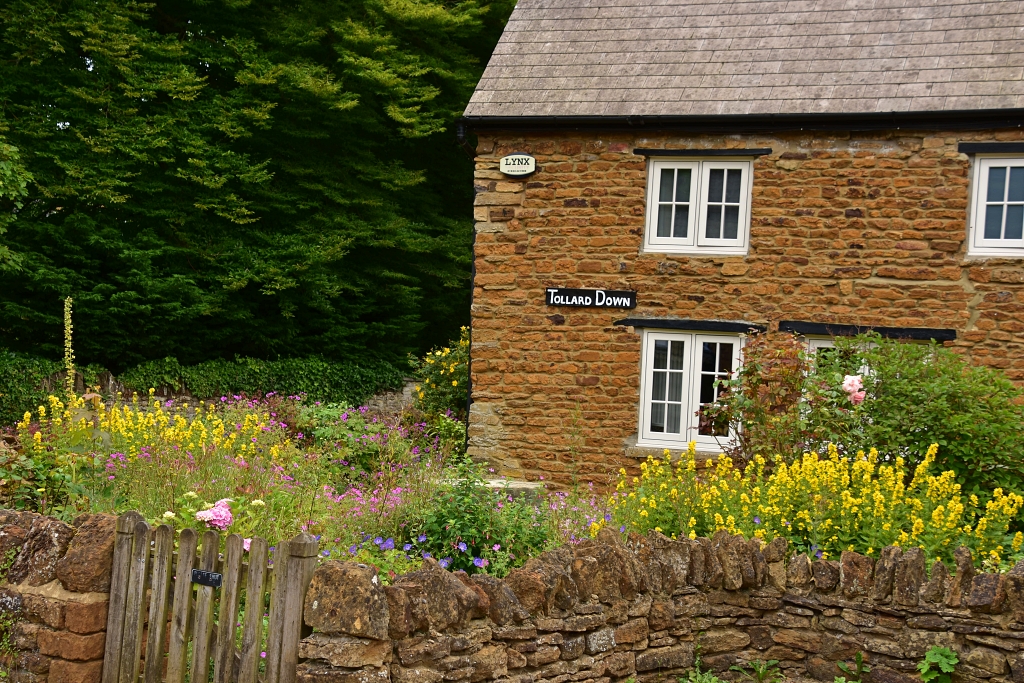 The Colourful Garden of Tollard Down, Number 18 on the Brixworth Heritage Trail © essentially-england.com
The Colourful Garden of Tollard Down, Number 18 on the Brixworth Heritage Trail © essentially-england.com
19. The Grange |
This grade II listed building is believed to date from the 1600’s but the main part id Georgian with Victorian additions. From 1922 until his death in 1946, the Secretary of the Pytchley Hunt Capt. Frank Litchfield lived here. King George V and the two Royal Dukes were regular visitors. On one occasion the King left a gift of a brace of pheasants hanging from the door knocker. |
20. The Brown House |
Originally a farmhouse, it became the home of Dr Harper. Medical Officer at Brixworth Workhouse in the 19th century. In the late 20th century Paul Morgan (1948 to 2001) co-founder of Ilmor Engineering lived here. |
21. The Fox and Hounds |
1848 is the first reference found for this public house. In 1911 the pub was owned by Dulley and Sons, a subsidiary of Praed’s brewery, Leonard Lyman was the tenant. He remained until 1934 when the licence was revoked. Later the barns at the rear were used by Mr Phil Foreman to restore steam engines. |
22. Brixworth Union Workhouse |
The workhouse opened in 1837 at a cost of £5,800. Designed to cater for paupers in a population of 13,000, it usually held about 150, with separate quarters for men, women, children and vagrants. There was also an infirmary and chapel. Conditions were amongst the hardest in the country. |
23. Greens Corner |
Edward Evertt ran his harness and saddle making business here in the 1880’s but then the premises were taken over by John Green a tailor. It continued through another three generations of the Green family, employing up to twenty workers and making clothing for the Pytchley and a number of other hunts until 1953. |
24. The Parish Hall |
This 19th century hall was originally the home of the local Salvation army when it was known as the “Old Barracks”. It was sold in 1941 to be used by Air Raid Wardens, the Parish Council and for various social functions, The Parish Council moved out in 1999. |
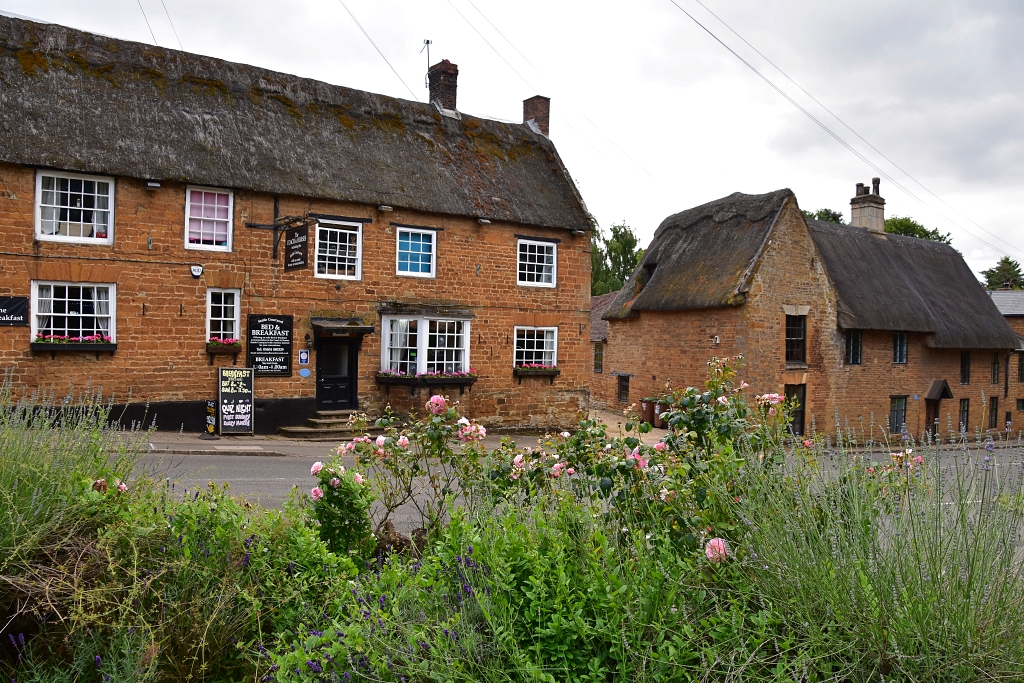 The Coach and Horses Pub and The Pound House, Numbers 30 and 29 on the Brixworth Heritage Trail © essentially-england.com
The Coach and Horses Pub and The Pound House, Numbers 30 and 29 on the Brixworth Heritage Trail © essentially-england.com
25. The George Inn |
This Grade II Public House of square coursed lias had a licence first granted in 1766. In 1778 local landowners met here to discuss the enclosure of open land. Charles Wells Brewery planned to close it in 1976 but a public petition convinced them to change their minds and extend it whilst demolishing the stables. A conservatory was added in the late 1990’s. |
26. The Old Post Office |
This was Brixworth’s first Post Office open as early as 1847 when the postmaster was John Knight. He was also a grocer and draper. Thomas Holt was sub-postmaster for 30 years until his death in 1914 when the Post Office was moved to a new site. |
27. The Old Stone House |
This 17th century thatched cottage became a Butchers Shop in the 19th century with a slaughterhouse and stables to the rear. Deliveries were made locally, to Maidwell and Lamport Hall. |
28. The Lodge |
A Grade II mid-18th century ironstone building with paddock and stables behind. The gate possibly came from Brixworth Hall. In the 19th century it was home of the Misses Green who looked after the Brixworth Relic. During WWII officers were billeted in the house and other ranks in the stables. |
29. The Pound House |
This Grade II Northamptonshire building dates from 1594 with additions in 1709. Variously called Ivy House, Eaglehurst and Harwood House, the present name derives from the old Pound opposite used to impound straying livestock. More recently the site included the Fox in the Pound Bookshop and was the home of the Brixworth Bugle newsletter. |
30. The Coach and Horses |
Dating from the early 18th century this Grade II old coaching Inn of square course lias was reputed to be able to change a team of four horses in under four minutes the fastest time on this north bound route. It was this Inn that Makor Isham came in October 1854 to confess to the murder of William Wood. |
Here’s a really nice YouTube video that walks around the Heritage Trail and also has some very good drone footage.
Northamptonshire Holiday Cottages
Northamptonshire is a largely rural county in the centre of England, renowned for shoemaking, stunning countryside, and very pretty villages. It makes a great place for walking and cycling and is ideal for a relaxing holiday or short break.
Below, we've collected some holiday cottage ideas. Personally, I would love to stay in Stoke Bruerne, right next to the canal. Stoke Bruerne is a friendly, pretty village with a couple of pubs, an Indian restaurant, and easy walking from the door.
To browse holiday cottages in other parts of England click here, or you could use our Booking.com search box.

